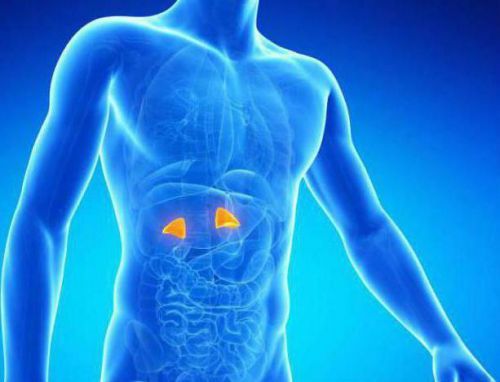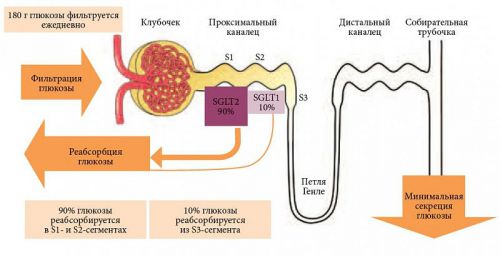Pathology of the adrenal glands, which are classified as heavy, significantly impair quality of life. Qualified diagnostics of the adrenal glands and immediate therapy can prevent disastrous consequences of the disease body.
The adrenal glands consist of cortex and medulla. The cortex has 3 layers: inner, middle and outer. Each of them produces its hormone: the top – aldosteron, medium – glucocorticosteroids, internal – hormones. The medulla produces adrenaline.
All hormones provide for the metabolism in the body.
The adrenal gland is a paired gland, located near both kidneys that perform the following functions:
- Take part in metabolism.
- Produce hormones.
- Provide the body with adrenaline and noradrenaline.
- Regulate the body’s response to stress.
What is adrenal disease diagnosed?
The most common diseases of the adrenal glands consider the following condition:
- hyperaldosteronism – disruption of the ureters, leading to excess production of aldosterone. To cause disease may coronary heart disease, liver cirrhosis, nephritis;
- the adrenal insufficiency – autoimmune diseases, causing the body to malfunction of life-support systems of the body. Cause of disease: necrosis after childbirth, malignant growth, the long-term presence in the body of infectious-inflammatory processes;
- hyperplasia – together with adrenal hyperplasia in the newborn experiencing a number of severe mutations at the genetic level;
- pheochromocytoma is a hormonal active tumor, which precede the development of diseases such as malignant neoplasm of the thyroid gland, hyperparathyroidism;
- Addison’s disease is one of the rare diseases in which the adrenal glands do not produce the required amount of cortisol.

Each of the diseases to disrupt endocrine systems, leading to disturbances of important vital processes of the body. Pathology of the adrenal glands divided into 2 groups: arising from failure of the hormones that appear when an excess of hormones.

The most frequent diseases with a lack of hormones include pathology.
Addison’s Disease
The skin and mucous membranes are painted in a bronze color. Pigmentation with the development of the disease covers all areas of the body. Suffers from genital system, resulting atrophy of the genital organs, with the result that there is aggression, irritability. Often hormonal disruption can lead to infertility.
The Disease Itsenko-Kushinga
Women complain of poor sleep, headaches. Fast is the weight gain, which often ends in obesity. The facial skin dry with a profuse rash. Visible excess of hair in mustache, beard. Female face adopts a Crescent-shaped form. Fat accumulation are deposited in the abdomen, the hips, while feet and hands are disproportionately thin. There is reduction of the uterus, cessation of menstruation, which leads to infertility.
The most frequent pathologies, in the excess of hormones include: horse syndrome, pheochromocytoma.
Syndrome Horse
The syndrome is characterized by a severe headache localized in the forehead, increased blood pressure. Progressively deteriorating eyesight. Observed pathology of the vascular system, resulting in cardiac arrhythmias, tachycardia. The patient gets tired quickly, muscle soreness is felt, convulsions.
When the disease occurs, the leaching of potassium and accumulation of sodium. This leads patients to a constant feeling of thirst. Urination occurs more frequently at night than during the day. Often develop pyelonephritis.
Pheochromocytoma
Pathology as a neoplasm medulla portion of the adrenal glands. When the disease produces excess adrenaline. Adrenogenital syndrome: pathology, the essence of which is manifested in the reduction in the production of some corticosteroids by increasing others. When the disease of the adrenal glands synthesize large amounts of androgens and low – gonadotropin.
In the congenital form of the disease there is increased sexual the hill, the presence of penoobraznaya of the clitoris. What the sex of the newborn, is difficult to determine. Pubertal form of the disease manifests itself in puberty. Menstruation in girls appear to be 16-17 years old. Body hair occurs in the male type. Women have broad shoulders, undeveloped Breasts. Pregnancy ends in miscarriage.
Diagnosis of adrenal glands includes: laboratory tests of blood and urine, instrumental methods: ultrasound, computed tomography, MRI. If there is a suspicion of malignant growth, the patient is offered to undergo a number of additional surveys.
Laboratory studies
DEA – analysis dealt with tests on other hormones, in order to identify the amount of androgens that allows for the differentiation of pathologies of the adrenal glands and of diseases of the ovaries, tumors.

Laboratory tests the examination of the patient with adrenal pathology includes tests for the presence of aldosterone, free cortisol, androgens and markers WDCN
Cortisol is a common – regulates the body’s response to stress. If the hormone levels are increased, this suggests that there is a disease of the endocrine glands. Aldosterone regulates electrolyte balance. Physical exertion sometimes cause a temporary production of excess amounts of the hormone.
Diagnosis the symptoms of the disease
Endocrine diseases are characterized by similar features, although each disease has its own characteristics of flow.
Hyperaldosteronism is characterized by the features:
- The weakening of the muscles.
- Frequent migraine attacks.
- Tachycardia.
- Polyuria.
- The loss of strength.
- Numbness in my feet.
In acute failure observed: weakness, poor appetite, the appearance of age spots on the skin, severe weight loss, diarrhea. Hyperplasia is characterized by symptoms: virilization, early pubic hair, rash, and later the beginning of the first menstruation.
The symptoms of pheochromocytoma:
- Hypertension.
- Bluish discoloration of the skin.
- Panic attacks.
- Convulsive state.
- Soreness of the joints.
- Nausea.
- Shortness of breath.
Addison’s disease is characterized by symptoms of: depression, low blood pressure, weakness, nausea and thirst, severe weight loss and tremor.
Diagnosis of adrenal tumors
Benign tumors do not reach the big sizes, the clinical manifestations are vague, such tumors are found accidentally. Malignant tumors rapidly increase in size.
Activity of neoplasms can be described by the presence in the daily urine aldosterone, free cortisol, homovanillic and vanillylmandelic acid. Blood on hormones it is necessary to take before and after medication.

Endocrinologists have diagnostic methods enabling to determine the presence of tumors of the adrenal gland and also to clarify the appearance and localization of tumors
Instrumental diagnostics
In the diagnosis of adrenal tumors are often confronted with difficulties as tumors early in their development are small, with the result that they often render at screening is missing.
The test of the adrenal glands is carried out in the following order:
- CT.
- Magnetic resonance imaging.
- X-ray examination.
CT of the adrenal glands will be able to recognize tumors early in their development. At a more advanced stage identifies the characteristics of the tumor: cysts, metastases. The apparatus scans the entire fabric.
With the help of computer tomography is the visualization of the structure of the cells, the images can be seen on the monitor. If you need to sensitive the image used contrast agent.
Ultrasound of adrenal glands – diagnostic method, which allows in shortest time to assess the state of the organ. Some time before the examination the patient should follow a diet that excludes animal proteins and sugar.
In the diagnosis of adrenal in women should be considered signs of pathology:
- Drastic weight gain.
- Problems with the gastrointestinal tract.
- Excess pigmentation.
- Body hair, typical for men.
- Violation of the menstrual cycle.
- Increase muscle mass by type, inherent in men.
Ultrasound with high precision detects the presence of a sarcoma, adenoma, hematoma, metastases
Other methods of examination of the adrenal glands
During the examination of the adrenal glands are a number of traditional methods:
- General and biochemical blood analysis.
- The General analysis of urine.
- The external examination.
Necessary for diagnosis are hormone test, showing the number of adrenal hormones. Mandatory x-ray of the skull, giving the opportunity to determine the size of the pituitary gland. Important methods in the diagnosis CT and MRI are considered. The localization of the tumors examined using selective catheterization of the veins of the body.
Pathology of the adrenal glands leads to serious disturbances in the functioning of human body. The correction of these disorders may be performed only by qualified specialist if the patient on time consulted to find the first manifestations of the symptoms of the disease. Timely diagnostic tests can help to stop the disease at its beginning.



